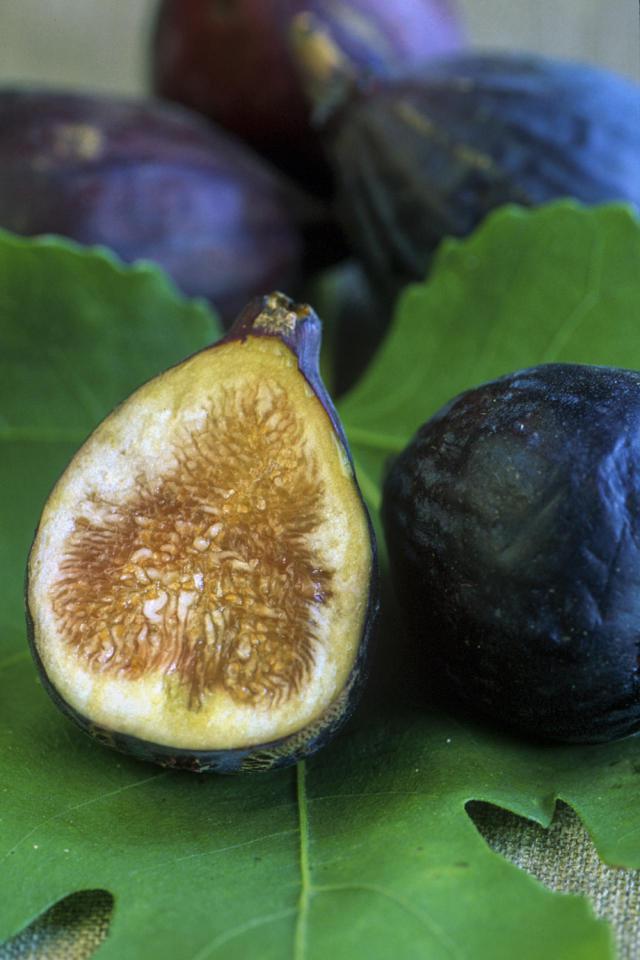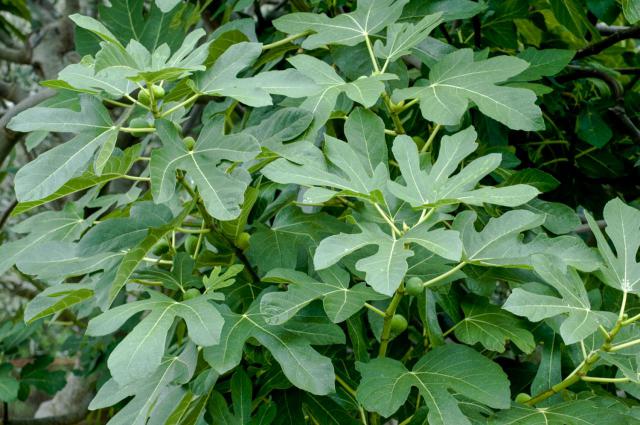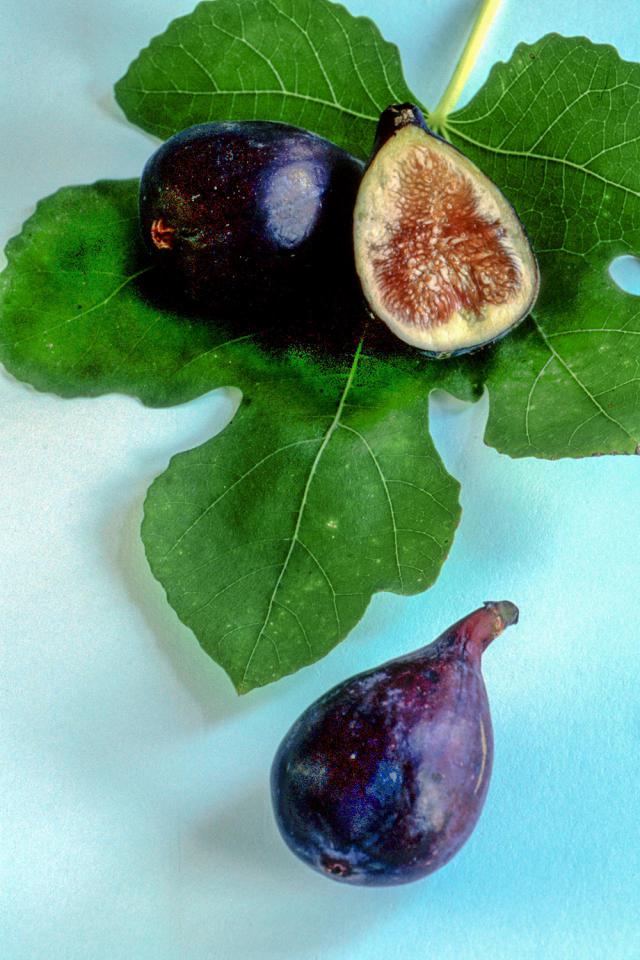Editor’s Note: Each month, HerbalEGram highlights a conventional food and
briefly explores its history, traditional uses, nutritional profile, and modern
medicinal research. We also feature a nutritious recipe for an easy-to-prepare
dish with each article to encourage readers to experience the extensive
benefits of these whole foods. With this series, we hope our readers will gain
a new appreciation for the foods they see at the supermarket and frequently
include in their diets.
The basic materials for this series were compiled
by dietetic interns from Texas State University in San Marcos and the
University of Texas at Austin through the American Botanical Council’s (ABC’s)
Dietetic Internship Program, led by ABC Education Coordinator Jenny Perez. We would like to acknowledge Perez, ABC Special
Projects Director Gayle Engels, and ABC Chief Science Officer Stefan Gafner,
PhD, for their contributions to this project.
By Hannah
Baumana and Jayme Bisbanob
a HerbalGram Associate Editor
b ABC Dietetics
Intern (Texas State, 2016)
Overview
The fig (Ficus
carica, Moraceae) is one of the
oldest known cultivated fruit trees (its cultivation precedes the domestication
of grains such as wheat [Triticum spp.,
Poaceae] and barley [Hordeum vulgare,
P oaceae]) and has more than 700 known varieties.1 A multi-stemmed,
deciduous sub-tropical shrub, the fig is one of more than 1,400 known species in
the genus Ficus, which belongs to the
mulberry family.2-4 What is commonly known as the fruit of the fig
tree is technically a flower that has turned in on itself, a structure called a
syconium.5 For the purposes of this article, this syconium will be
referred to as the “fruit” of the plant. The fig also has a unique method of
pollination, as it is dependent upon a family of wasps called agaonid wasps,
also known as fig wasps. Agaonid wasps and the fig coevolved together over millennia
and cannot thrive without each other.3 The wasps can lay eggs only within
the fruit of the fig, and the fig can be pollinated only by agaonid wasps. The
female wasp burrows into the immature fig, spreads pollen, and lays her eggs.6
When the eggs hatch, the males and females mate, collect pollen, and then exit
the fig to pollinate other figs. Any wasp material that remains is digested by
the maturing fig, and any fig that is not pollinated drops off the tree. oaceae]) and has more than 700 known varieties.1 A multi-stemmed,
deciduous sub-tropical shrub, the fig is one of more than 1,400 known species in
the genus Ficus, which belongs to the
mulberry family.2-4 What is commonly known as the fruit of the fig
tree is technically a flower that has turned in on itself, a structure called a
syconium.5 For the purposes of this article, this syconium will be
referred to as the “fruit” of the plant. The fig also has a unique method of
pollination, as it is dependent upon a family of wasps called agaonid wasps,
also known as fig wasps. Agaonid wasps and the fig coevolved together over millennia
and cannot thrive without each other.3 The wasps can lay eggs only within
the fruit of the fig, and the fig can be pollinated only by agaonid wasps. The
female wasp burrows into the immature fig, spreads pollen, and lays her eggs.6
When the eggs hatch, the males and females mate, collect pollen, and then exit
the fig to pollinate other figs. Any wasp material that remains is digested by
the maturing fig, and any fig that is not pollinated drops off the tree.
The fig tree grows 15-30 feet (4.6-9.1 meters) tall
with roughly textured palmate leaves that have three to five lobes each.5,7
The color of the ripe fruit is cultivar-dependent and can range from light
green (Adriatic figs) to brown or dark purple (Mission figs), although genetic variation
has waned as growers select for desirable traits of well-established fig
cultivars.3,7 Fig trees were first found wild in Western Asia 6,500 years
ago and were then brought by humans to the eastern Mediterranean area, where
fig trees continue to flourish and grow wild.3,5,7
Phytochemicals and Constituents
Figs are a good source of soluble and insoluble
fiber. The soluble fiber content, which makes up about 28% of a fig’s total
fiber content, is significant and has been shown to reduce low-density
lipoprotein (LDL) cholesterol, as well as to help maintain blood sugar levels, because
it slows the transit time of food in the gut.4,8,9 Four to five
dried figs or two fresh figs provide roughly 12 grams of fiber, almost half of
the 25-30 grams recommended daily intake for the average adult.2,4
Figs also provide calcium and iron: two micronutrients that are often deficient
in specific populations or disease states.4,5,10 The protein in figs
contains high levels of the amino acids aspartic acid and glutamine.2,9,11
The predominant bioactive compounds present in figs
include phenolic compounds, phytosterols, anthocyanins, and organic acids that
contribute to antioxidant activity. Figs also contain coumarins, which have
demonstrated anti-inflammatory, anti-edema, and cytotoxic activities, and
numerous volatile compounds that provide flavor and scent.3
Figs have a high amount of the flavonol quercetin, which
has anti-inflammatory properties and can play an important role in preventing
cardiovascular disease. Fig cultivars have varied antioxidant profiles correlated
to their color: the darker varieties have the highest total polyphenol content
while the light green varieties have the lowest total polyphenol content.10
The anthocyanin content of figs can help to maintain healthy blood lipid levels
and play an important role in the prevention of obesity, diabetes,
cardiovascular disease, and certain cancers.11 blood lipid levels
and play an important role in the prevention of obesity, diabetes,
cardiovascular disease, and certain cancers.11
The latex of the fig fruit has both adverse effects
and health benefits. The milky white, sticky substance present in unripe fruit contains
alkaloids, tannins, a large amount of phytosterols, and fatty acids.2
However, there is evidence that the latex may cause irritation when used
topically, and those who work with figs during the harvest often wear gloves to
protect their skin.3
Fifty-nine volatile compounds have been identified in
other parts of the plant including monoterpenes, sesquiterpenes, and
norisoprenoids2,3. These compounds are present mainly in the fig
leaves, with the exception of monoterpenes, which were found in the fruit peel
and pulp. Of the anthocyanidins isolated from fig tree leaves, cyanidin and
pelargonidin derivatives were the most predominant.2,3,10,12 Four
triterpenoids were identified in the leaf: bauerenol, lupeol acetate, methyl
maslinate, and oleanolic acid.2 Recent studies have confirmed that
the highest levels of these bioactive compounds are found in the skin of the
fig, and therefore support the evidence that most of the nutrients present in
the plant are accessible through consumption of the whole fruit. The leaves and
the roots of the fig tree contain plant sterols (specifically, modified
triterpenes), which have been shown to lower cholesterol levels by blocking the
absorption of exogenous cholesterol.2
Historical and Commercial Uses
The flesh, pulp, leaves, roots, and latex from the
fig tree have been used as part of the traditional medicine practices of India
and China.3,4,10,13 Historically, figs have been used to treat
numerous ailments, including common digestive issues such as poor appetite,
colic, indigestion, constipation, dysentery, inflamed or ulcerated intestines,
and intestinal parasites. They also provide antispasmodic, antibacterial,
anti-inflammatory, and natural laxative effects.2,3,10,13
Additional uses of the fruit include the
improvement of vision, alleviation of asthma, treatment of cardiovascular
disorders and certain cancers (e.g., colon and lung), maintenance of blood
sugar levels, and relief of sore throats and coughs. The latex of fig was used topically
to treat boils and warts.2,3,10,13 In Pakistan, figs were not only
traditionally used as food for humans, but also as feed for livestock, while
the trees were used as fuel, roofing materials, tool handles, and even simply
for the shade that mature plants can provide.13 Figs were also used
as a source of sugar prior to the efficient cultivation of sugarcane (Saccharum officinarum, Poaceae).5
In some European countries, fig syrup enjoys widespread use as a mild laxative;
the phenols, flavonoids, anthocyanins, and cellulose present in the fruit may
contribute to its laxative effects.14
Modern Research
Cardiovascular Health
In a rat study, quercetin-3-O-rutinoside (rutin) in fig fruit was identified as being partly
responsible for cholesterol-lowering activities.15 Rats that were fed
a high-fat diet that was supplemented with fig fruit for eight weeks had
greater reductions in total cholesterol levels, triglyceride levels, and LDL
cholesterol levels, with increased high-density lipoprotein (HDL) levels
compared to the control groups, one fed a normal diet without supplementation
and one fed a high-fat diet without supplementation. These are all indicators
that are monitored in the diagnosis of cardiovascular disease. Researchers
speculated that rutin increased cholesterol excretion, while the polyphenol
content of the plant inhibited the synthesis of cholesterol.
Blood Sugar
Regulation
A study that investigated the antidiabetic
potential of fig fruit consumption on blood sugar maintenance found that fig
fruit had a significant inhibitory effect on α-amylase activity in diabetic rats.
This enzyme hydrolyzes dietary carbohydrates (i.e., breaks the carbohydrates
down into its component sugar molecules  for easier elimination) in the
pancreas.11 The study also found that the flavonoid content of figs
had a hypoglycemic effect on rats, improved overall glucose metabolism, and
reduced oxidative stress. Quercetin, when administered with glucose, aided in
the efficient transport of glucose for proper digestion. Aqueous fig leaf
extract also showed a hypoglycemic effect in diabetic rats, possibly due to its
ability to increase plasma insulin levels.16 for easier elimination) in the
pancreas.11 The study also found that the flavonoid content of figs
had a hypoglycemic effect on rats, improved overall glucose metabolism, and
reduced oxidative stress. Quercetin, when administered with glucose, aided in
the efficient transport of glucose for proper digestion. Aqueous fig leaf
extract also showed a hypoglycemic effect in diabetic rats, possibly due to its
ability to increase plasma insulin levels.16
Cytotoxic Properties
Fig
leaf and fruit extracts, as well as fig latex, at relatively low concentrations,
have exhibited in vitro efficacy against several cancer cell lines.16,17
Isolated compounds from fig wood resin have also been identified in
experimental studies as potent cytotoxic agents that prevent proliferation of
various cancer cell lines.18
Topical Applications
Fig
has been investigated for topical skincare applications. An open-label clinical
trial found that a wart treatment made from fig latex was only marginally less
effective than standard cryotherapy for the treatment of skin disturbances,
with no adverse events reported in the fig treatment group.17 Additionally,
a placebo-controlled clinical trial found that a base cream with fig fruit
extract significantly increased skin hydration compared to the placebo cream,
which did not contain the extract.19 Researchers concluded that the
fig cream could help maintain healthy skin and lessen acne and the appearance
of wrinkles.
Nutrient Profile20
Macronutrient Profile: (Per 100 grams
fresh figs [approx. two medium fruits])
74 calories
0.8 g
protein
19.2
g carbohydrate
0.3 g
fat
Secondary Metabolites: (Per 100 grams
fresh figs [approx. two medium fruits])
Very good source of:
Vitamin
K: 4.7 mcg (11.8% DV)
Dietary
Fiber: 2.9 g (11.6% DV)
Good source of:
Potassium:
232 mg (6.6% DV)
Vitamin
B6: 0.1 mg (5% DV)
Manganese:
0.1 mg (5% DV)
Also provides:
Magnesium:
17 mg (4.3% DV)
Thiamin:
0.06 mg (4% DV)
Calcium:
35 mg (3.5% DV)
Vitamin
C: 2 mg (3.3% DV)
Riboflavin:
0.05 mg (2.9% DV)
Vitamin
A: 142 IU (2.8% DV)
Iron:
0.4 mg (2.2% DV)
Niacin:
0.4 mg (2% DV)
Folate:
6 mcg (1.5% DV)
Phosphorus:
14 mg (1.4% DV)
DV =
Daily Value as established by the US Food and Drug Administration, based on a
2,000-calorie diet.
Recipe: Goat
Cheese-Stuffed Figs with Pistachios and Balsamic Glaze
Adapted from
Janette Fuschi21
Ingredients:
1 cup
balsamic vinegar 2
teaspoons sugar (optional) 12
ripe, fresh figs, washed, stems removed 4
ounces soft goat cheese 1/4
cup pistachios, unshelled and roasted
Directions:
Add
the balsamic vinegar and sugar to a small saucepan. Heat over medium heat until
simmering and stir until sugar dissolves. Maintain a low simmer for about 10-15
minutes until the vinegar thickens enough to coat the back of a spoon. Remove
from heat and cool to room temperature. Cut a
deep ‘X’ on the top of each fig without cutting through the bottom of the fruit.
Stuff each fig with a small piece of goat cheese. Place the figs upright on a
baking sheet. Position
an oven rack six inches from the broiler element and heat the broiler. Broil
figs for about five minutes, until cheese bubbles. Remove
from oven. Sprinkle figs with pistachios and drizzle with balsamic glaze. Serve
warm.
Photo credit: All images ©2017 Steven Foster
References
Condit
IJ. Fig varieties: a monograph. Hilgardia.
1955;23(11):323-538. http://doi.org/10.3733/hilg.v23n11p323. Barolo
MI, Ruiz Mostacero N, López SN. Ficus
carica L. (Moraceae): An ancient source of food and health. Food Chem. 2014;164:119-127.
doi:10.1016/j.foodchem.2014.04.112. Mawa
S, Husain K, Jantan I. Ficus carica
L. (Moraceae): Phytochemistry, traditional uses and biological activities. Evidence-Based Complementary and Alternative
Medicine. 2013;2013: 974256. doi:10.1155/2013/974256. Slavin
J. Figs: past, present, and future. Nutr
Today. June 2006;4:180-184. Bateman
H, Berton M, Doig F, Driver E, Mapps J, Quintrell S, eds. Edible: An Illustrated Guide to the World’s Food Plants. Washington
DC: National Geographic Society; 2008. Jousselin
E, Hossaert-McKey M, Herre EA, Kjellberg F. Why do fig wasps actively pollinate
monoecious figs? Oecologica.
2003;134:381-387. van
Wyk BE. Food Plants of the World: An
Illustrated Guide. Portland, OR: Timber Press, Inc.; 2005. Peterson
JM, Montgomery S, Haddad E, Kearney L, Tonstad S. Effect of consumption of
dried California mission figs on lipid concentrations. Ann Nutr Metab. 2011;58(3):232-238. doi:10.1159/000330112. Solomon
A, Golubowicz S, Yablowicz Z, et al. Antioxidant activities and anthocyanin
content of fresh fruits of common fig (Ficus
carica L.). J Agric Food Chem.
2006;54:7717-7723. Harzallah
A, Bhouri AM, Amri Z, Soltana H, Hammami M. Phytochemical content and
antioxidant activity of different fruit parts juices of three figs (Ficus carica L.) varieties grown in
Tunisia. Ind Crops Prod.
2016;83:255-267. Wojdyło
A, Nowicka P, Carbonell-Barrachina ÁA, Hernández F. Phenolic compounds,
antioxidant and antidiabetic activity of different cultivars of Ficus carica L. fruits. J Funct Foods. 2016;25:421-432.
doi:10.1016/j.jff.2016.06.015. Wang
H, Nair MG, Strasburg GM, et al. Antioxidant and antiinflammatory activities of
anthocyanins and their aglycon, cyanidin, from tart cherries. J Nat Prod. 1999;62:294-296. Abbasi
AM, Shah MH, Li T, Fu X, Guo X, Liu RH. Ethnomedicinal values, phenolic
contents and antioxidant properties of wild culinary vegetables. J Ethnopharmacol. 2015;162:333-345.
doi:10.1016/j.jep.2014.12.051. Baek HI, Ha KC, Kim HM, et al.
Randomized, double-blind, placebo-controlled trial of Ficus carica paste for the management of functional constipation. Asia Pac J Clin Nutr.
2016;25(3):487-496. Belguith-Hadriche
O, Ammar S, Contreras MDM, et al. Antihyperlipidemic and antioxidant activities
of edible Tunisian Ficus carica L.
fruits in high fat diet-induced hyperlipidemic rats. Plant Foods Hum Nutr. 2016;71:183-189.
doi:10.1007/s11130-016-0541-x. Badgujar
S, Patel VV, Bandivdekar AH, Mahajan RT. Traditional uses, phytochemistry and
pharmacology of Ficus carica: A
review. Pharmaceutical Biology.
2014;52(11):1487-1503. Jing
L, Zhang YM, Luo JG, Kong LY. Tirucallane-type triterpenoids from the fruit of Ficus carica and their cytotoxic
activity. Chemical and Pharmaceutical
Bulletin. 2015;63(3):237-243. Rubnov
S, Kashman Y, Rabinowitz R, Schlesinger M, Mechoulam R. Suppressors of cancer
cell proliferation from fig (Ficus carica)
resin: isolation and structure elucidation. J
Nat Prod. July 2001;64(7):993-996. Khan
H, Akhtar N, Ali A. Effects of cream containing Ficus carica L. extract on skin parameters: in vivo evaluation. Indian J Pharm Sci. 2014;76(6):550-564. Basic
Report: 09089, Figs, raw. United States Department of Agriculture Agricultural
Research Service website. Available at: https://ndb.nal.usda.gov/ndb/foods/show/2201.
Accessed July 19, 2017. Fuschi
J. Warm figs with goat cheese, pistachios and balsamic glaze. Culinary Ginger website.
August 21, 2015. Available at: http://culinaryginger.com/warm-figs-with-goat-cheese-pistachios-and-balsamic-glaze/.
Accessed July 19, 2017.
|